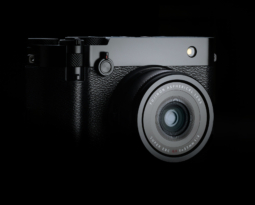Fujifilm GFX 100 II with GF 250mm and GF 1.4TC for Bird Photography?
Two years ago, I happened to notice a Robin’s nest improbably situated between two pipes alongside our building.
https://www.captureintegration.com/fuji-gfx-for-bird-photography/
There were hatchlings in the nest and they were just a matter of days away from taking their first flight. So I grabbed our Fujifilm GFX 100s and the Fujifilm GF 250mm lens and took some images. I thought it was perhaps a bit of a stretch, but in some cases this kit could be used as a camera system for bird photography.
Bird photography comes with its challenges, and there are some with the Fujifilm GFX – it’s a large camera, the 250mm lens is only a 197mm equivalent, so it’s not very long for bird photography.

However, last week, I happened to notice two Mourning Doves huddling on the walkway past our door, and they only flew off as I was almost upon them. So I cast a glance around and sure enough, 2 stories up, there was a nest on a window ledge, and there were 2 chicks inside. So I decided to take another crack at photographing birds with the GFX system, and this time I added the Fujifilm GF 1.4 Tele Converter for some extra reach. I wondered how it would perform. I think the results are pretty impressive.


All these images are handheld. The 8 stop IBIS of the GFX 100 II works phenomenally well. Although one still has to take care, even with reasonably fast shutter speeds, when using a long lens. One of the benefits of medium format high resolution is that you have tremendous cropping ability. And this can offset lens reach, to some degree. I certainly had some focus misses (I was manually focussing all images).

Remember, when using a Tele Converter, you give up some speed. So with the f/4 maximum aperture of the GF 250mm, the added 1.4TC meant that I was shooting most of these at f/8 (f/5.6 would have been wide open).

Fujifilm has already posited a 500mm lens on their publicly disclosed (Thank you Fuji!) roadmap for 2024, and I am looking forward to checking out this optic. What’s more, the GF 1.4 Tele Converter is supposed to be compatible, which would make it a 700mm lens, a 552mm equivalent. I can’t wait.

There are babies out everywhere now. This Eastern Bluebird actually has 5 babies, only a few of them were around. What makes a tele converter work is the fidelity of the native lens, and the fidelity of the Tele Converter itself. A lens with a tele converter will never be as sharp as that lens without the tele converter. But high quality optics in both can ensure very usable, sharp images.

This was a funny scene. What happened prior to the above images is that there were 2 baby Bluebirds on the birdbath. A Robin then landed and the baby Bluebirds opened their beaks and stuck them at the Robin. And the Robin actually fed them! Or made some attempt to. First it pushed its beak toward one then the other baby Bluebird. Then the Robin decided to take a bath and one baby flew off, but the other landed on the pedestal and stood with their beak open. I guess at that point, the Robin had enough.


By Steve Hendrix
Thanks for reading! If you have any questions feel free to reach out!
Steve Hendrix
Steve@Captureintegration.com – 404.543.8475
Discover more from Capture Integration
Subscribe to get the latest posts sent to your email.






